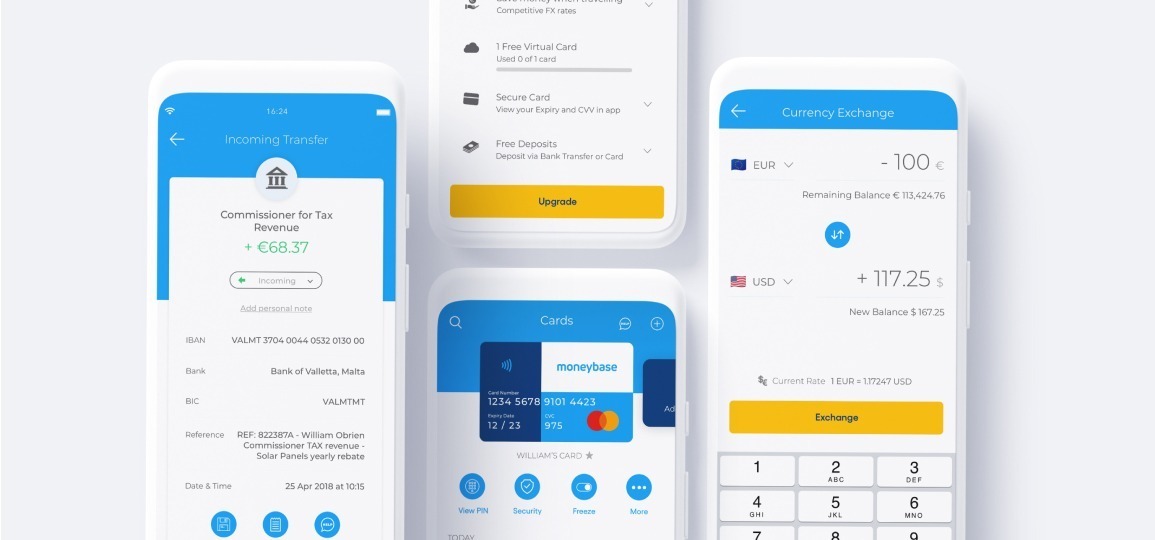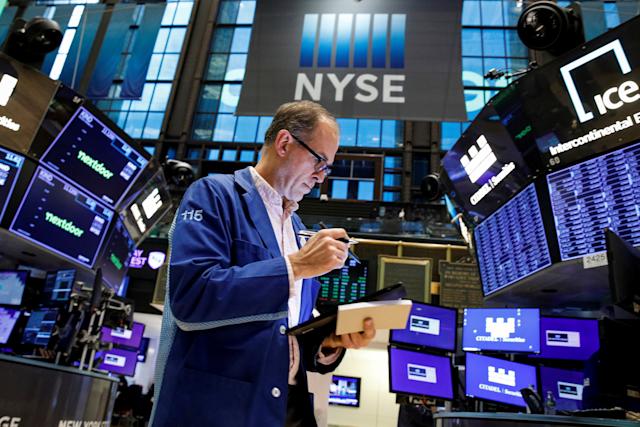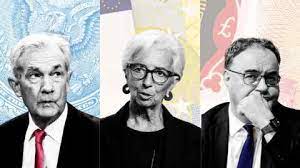For more than 130 years, Merck & Co has been driven by the philosophy that great medicines and vaccines can change the world and its long legacy of crucial medical milestones have been testament to that. Yet, despite its strong inoculation programme, it appeared to have missed much in 2020, remaining far behind leaders in the development of a COVID-19 vaccine like Pfizer (PFE) and Moderna (MRNA). At the same time, its stock was one of the worst performers among large-cap drug manufacturers.
In 2021, Merck got the ball rolling, first by hitting the mark with its oral COVID-19 pill. The medication could fill a big need for a pill that patients could easily take from the comfort of their own home, avoiding hospitalization. Meanwhile, the crown jewel in its portfolio, Keytruda, continues to earn regulatory nods, while the recent announcement of its Acceleron acquisition, means that it could help it expand its lineup. So far, its strategy looks like it could pay off and this coupled with Merck’s solid long-term outlook and positive comeback makes it a top pharma pick particularly for conservative investors.

A brief history of Merck
With roots dating back to 1668, Merck & Co traces its origins to its former German parent company Merck Group, when Friedrich Jacob Merck bought an apothecary in Darmstadt, Germany. By 1827, what was once a small pharmacy evolved into a drug manufacturer company, particularly known for its commercial production of morphine. Merck had perfected the chemical process of morphine extraction from opium and later introduced cocaine, which was eventually used to treat sinus problems, while it was added to various beverages to give consumers an energy boost. The company’s American roots began in 1891, when George Merck emigrated to the U.S. and set up Merck & Co. in New York to serve as a U.S. subsidiary to the Group. Six years later, Merck & Co opened a pharmacy in downtown Manhattan, becoming popular across the U.S. and Europe for selling medicines, sweets and various other knick-knacks which was unheard of at the time.
With the onset of World War I, the company was subjected to expropriation under the Trading with the Enemy Act of 1917 and although the company was bought back via a U.S. government auction, the American subsidiary separated from its German parent. The modern company as we know it became Merck & Co in the U.S., however, the right to the name brought the two companies at loggerheads. Ultimately, E. Merck AG retained the rights to the Merck trademark outside the U.S. Decades later, in 1953, Merck & Co merged with Philadelphia-based Sharp & Dohme Inc, a move that made the firm the largest drugmaker in the U.S. overnight.
A top innovator in its sector, many of Merck’s scientists have developed vaccines and medications to treat diseases that others had failed to do. In the 1940s and 1950s, it was the first to synthesize cortisone, which was eventually used as an effective treatment to combat inflammation. According to the company, Merck’s cortisone was used to treat the arthritis of renowned Fauvist painter Raoul Dufy, which helped him resume his work. In return, Dufy gave Merck the right to reproduce five of his paintings. Merck scientists have also developed the first vaccines for mumps, rubella and the first trivalent measles, mumps and rubella, the first Hepatitis B vaccine and the first varicella vaccine for chickenpox, amongst others.
Today, the company develops and produces a range of medical products including medicines, vaccines, biological therapies, as well as animal health products. In 2020 alone it had six blockbuster drugs, each generating over $1 billion in revenue.
Fun fact
Harry Streep, the father of Oscar-winning actress Meryl Streep worked at Merck for 25 years, serving various roles, including manager of compensation and benefits, director of personnel for the international division, as well as manager of foreign research and planning, before retiring in 1975.
When did Merck go public?
Back in 1941, Merck made a public stock offering of 202,372 common stock shares, priced at $28.75 a share. A few years later in 1946, the company listed its shares on the New York Stock Exchange (NYSE).
The stock has split six times, undergoing three 2-for-1 splits in 1972, 1986 and 1999, which means that for every share of stock owned pre-split, a shareholder owned two shares post-split. The stock has also undergone two 3-for-1 splits in 1988 and 1992, so for each stock owned pre-split, a shareholder would then own three shares, while as recently as 2021, the sixth stock split took place, this time a 1048 for 1000 split, meaning that for each 1000 shares owned pre-split, a shareholder would now own 1048 shares. To put things into perspective, a 72,000-share position pre-split would become a 75,456-share position following the split.
What’s more, one thing that is appealing about Merck’s stock is that it comes with a rock-solid shareholder rewards programme. The company’s dividend yield as of October 27, 2021 is 3.16%, with its current trailing twelve-month (TTM) payout being that of $2.60.

Is Merck a buy?
The pharmaceutical giant saw its revenue increase in 2020, rising from $42.3 billion in 2018 to approximately $48 billion over the year, with revenues lifted thanks to notable sales of its cancer treatments. In fact, its oncology franchise generated the most revenue in 2020. In particular, its cancer drug Keytruda saw revenues increase by around $3.3. billion between 2019 and 2020. On the other hand, during the second quarter of 2021, the company’s adjusted earnings climbed 28% to $1.31 per share, while sales soared to $11.4 billion. Keytruda sales increased 23% to almost $4.18 billion, whereas sales of its human papillomavirus vaccine, Gardasil, soared 88%. And its third-quarter results showed that the company’s momentum continues unabated. Worldwide sales topped $13.2 billion, 20% above third-quarter 2020, while sales grew 19% reflecting strong demand for its robust portfolio. Meanwhile, animal health sales also grew 16% to $1.4 billion.
Then, in October of 2021, Merck made news with its antiviral COVID-19 drug, which according to the firm, it reduces the risk of hospitalisation or death from the disease by 50%, based on data from a late-stage trial. An oral medication that could make treating patients earlier on in their infection much easier, while helping to keep hospitals from overflowing certainly offers much hope. A few weeks later, Merck said the EU drug regulator had started an expedited licensing process for molnupiravir, while earlier in October, the company asked the U.S. Food and Drug Administration (FDA) to approve the pill. If given the green light, it would be the first treatment for COVID that does not need to be administered through needles or intravenous infusions. And despite not being sanctioned yet, the drugmaker has already secured a contract with the U.S. government to supply 1.7 million courses of the drug at a price of $700 per course, while it has also signed supply deals with other countries including Britain, Malaysia and Singapore.
As a result, Merck stock popped into a buy zone in late October, reaching a 52-week high and trading at $83.10 on October 4, as the prospect of another tool in the battle against COVID bolstered investors’ enthusiasm for the stock. Some have even gone so far to suggest that vaccine demand could decline once an oral treatment becomes available.
Merck took things a step further when in October 27, 2021 it signed a landmark voluntary licensing deal with the UN-backed Medicines Patent Pool to expand low-cost access to its COVID-19 antiviral pill throughout the developing world, making it one of the first royalty-free licensing agreements to be struck by a pharmaceutical company for a key COVID-19 medical technology. The move should boost the generic manufacturing of its molnupiravir drug once authorised by regulators and comes in stark contrast to the stance by messenger RNA manufacturers Pfizer and Moderna who have so far balked at sharing their vaccine technology, contributing to a shortage of jabs in low and middle-income nations according to public health officials.
What’s next for Merck?
Operating in a market that is constantly changing and developing means that investing in innovation is all the more important. And Merck understands that developing commercially successful products, such as Keytruda and Gardasil is essential if the company is willing to compete in the industry. As it continues to recognise the significance of research and development, it has invested approximately $10 billion in the research for innovative medicines over the last few years, while in 2020, its spending in R&D reached a mind-blowing $13.6 billion.
With strategic business development a top priority according to Merck’s management and the desire to both bolster and balance its pipeline, in September the company agreed to purchase rare disease specialist Acceleron Pharma in a cash and stock transaction valued at $11.5 billion. The deal means that Merck will not only add Acceleron’s pipeline treatments of rare blood-related diseases, but it is also set to beat out interest from rival suitors like the likes of Bristol-Myers (BMY), which owns an 11.5% stake in Acceleron.
Taking into account its blockbuster drugs, its promising COVID-19 oral pill and the products that will form part of its pipeline once the deal with Acceleron closes, Merck & Co looks set to grow its revenue and earnings for the foreseeable future, making it a good pharma stock to hold on to.
How to invest in Merck & Co (MRK) with Moneybase Invest
Ready to invest in Merck (MRK)? Your first step to tapping into a world of investment opportunities with Moneybase Invest is to sign up and open an account.
To do so:
- Download the app from either Google Play or the Apple App Store. Alternatively, you may access Moneybase Invest on your desktop by visiting https://live.cctrader.com/
- Once you’ve onboarded successfully and have funded your account, head over to the search bar at the top of your screen and input either the company name or ticker symbol.
- Select the instrument of your choice from the list and then click on the Buy button on the window located at the bottom of your screen.
- On the New Order page, input the number of shares you would like to purchase and hit the Place Buy Order. The stock has been added to your portfolio.
Access over 20,000 Stocks, ETFs, Bonds & Funds and over 4,300 fractional US shares and ETFs on our award-winning platform, with no hidden fees and instant market execution.
Moneybase Invest is brought to you by Calamatta Cuschieri Investment Services Ltd and is licensed to conduct investment services business by the MFSA under the Investment Services Act.
Moneybase Invest offers direct market access and speed of execution and is intended for knowledgeable and experienced individuals taking their own investment decisions. The value of investments may go up and down and currency fluctuations may also affect investment performance.
The contents of this article are not intended to be taken as a personal recommendation to invest but strictly based on research and for information purposes only. Retail investors should contact their financial adviser for a suitability assessment prior to taking any investment decisions.






